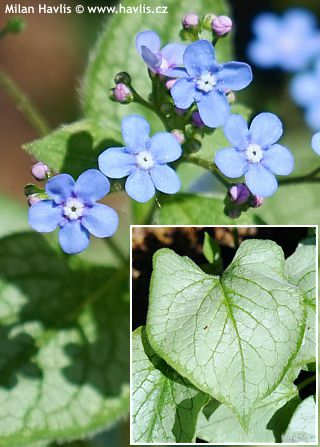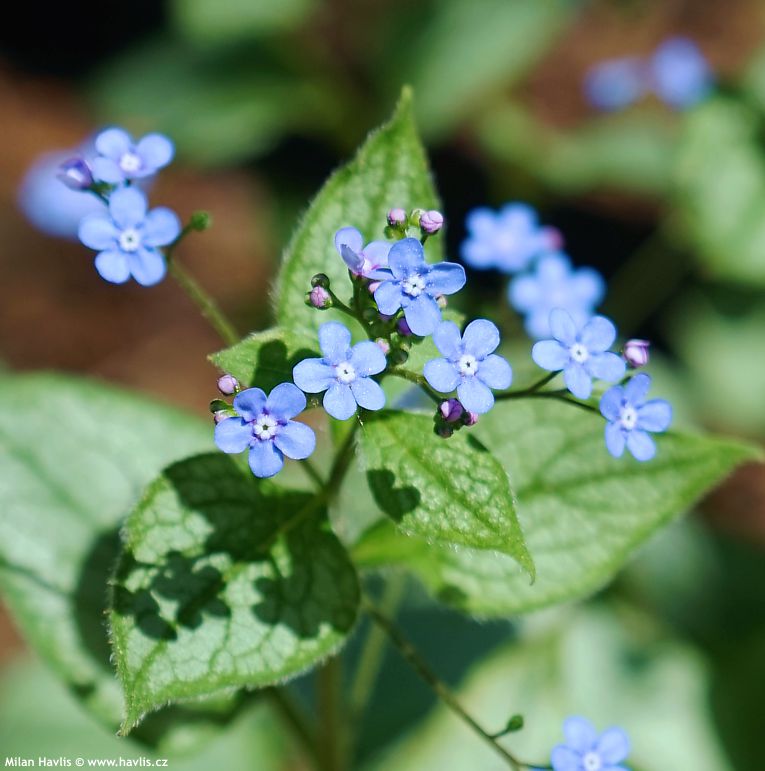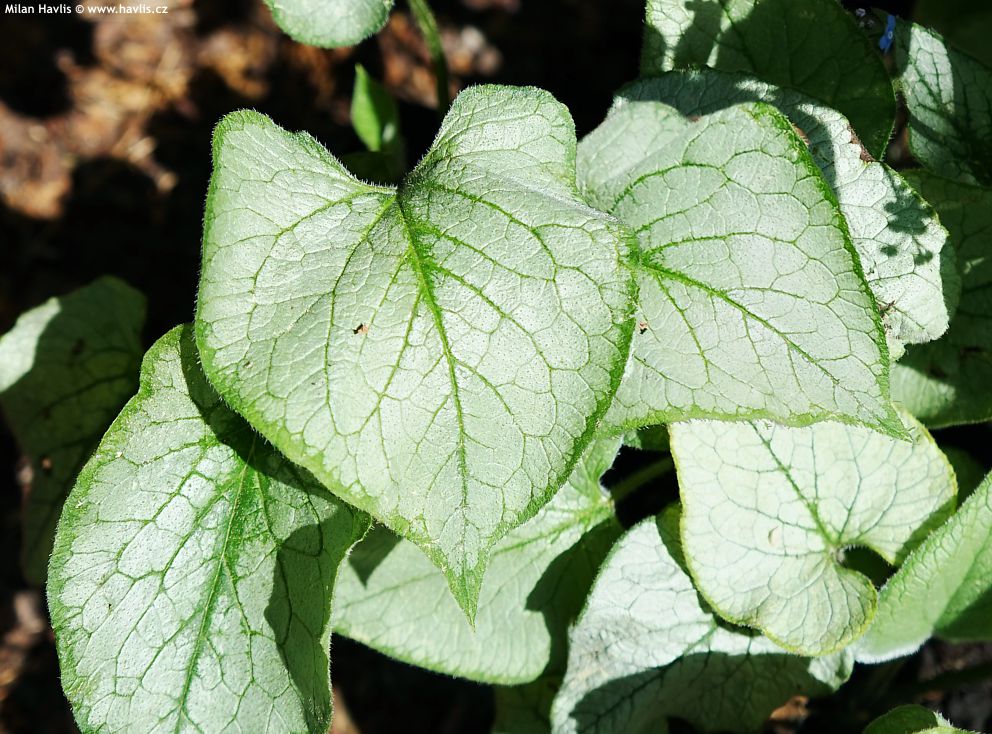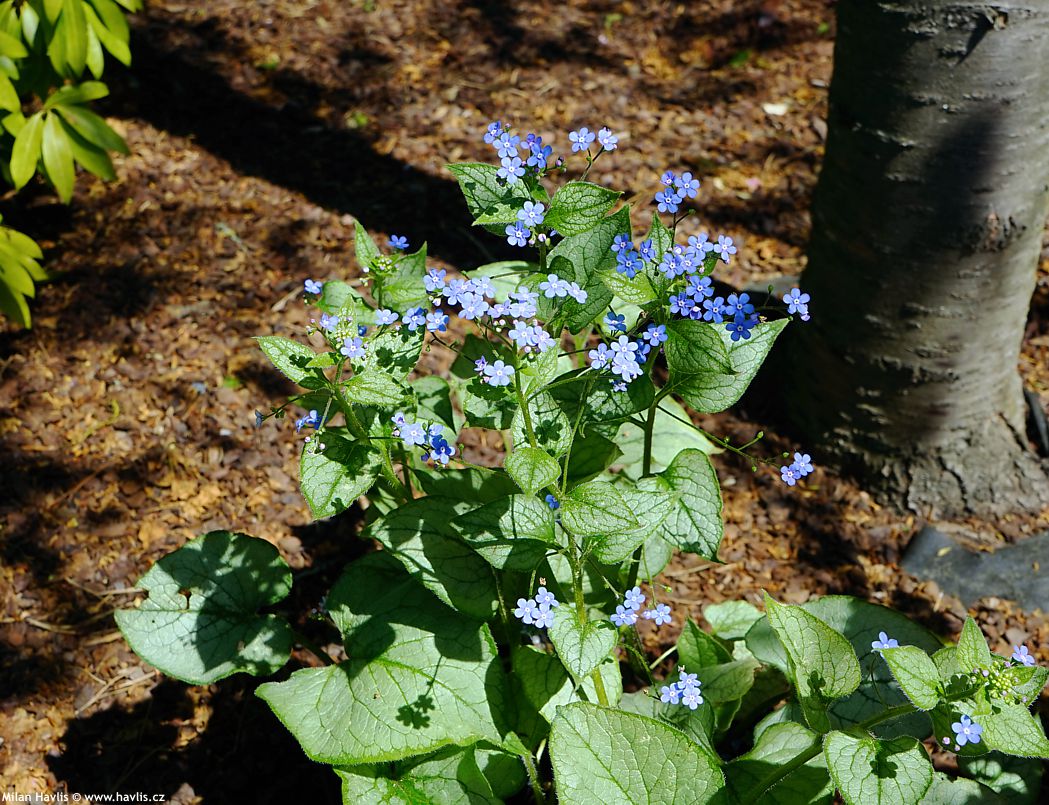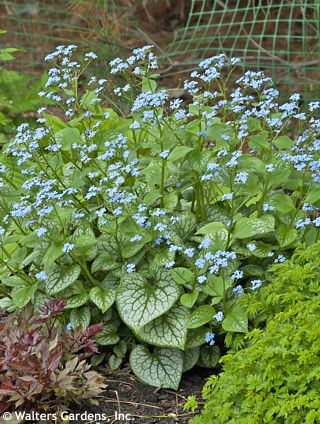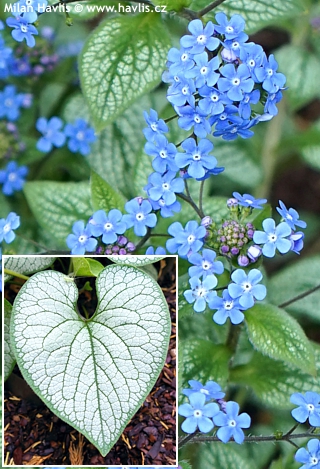Brunnera macrophylla 'LOOKING GLASS' brunnera, Siberian bugloss
size/type
low or groundcovering,low perennial
usual height
0,3-0,4m
usual width
0,3-0,4m
leaves
deciduous broadleaf
colour of leaves
flowers
showy
colour of flowers
blooming time
April-May
location
semi-shade to shade
soil type
any (acidic to alkaline)
soil moisture requirements
evenly moist but well-drained
USDA zone (lowest)
3 (down to -40°C)
winter protection
for zone 5+6

for zone 7

categorized
Brunnera
Brunnera or Siberian bugloss is an attractive woodland perrenial with showy foliage, suitable especially for garden enthusiasts who look for the beauty of leaves rather than flowers. The leaves are rounded to heart-shaped and if cultivated in a mass they provide an excellent and lush groundcover under tall multistemmed shrubs or trees.Description of the plant:
Looking Glass is an old term for mirror, an Italian invention from around 1300. It originated in Venice where transparent glass was coated a silvery mixture of mercury and tin on the reverse which gave an almost perfect reflection as expected from a glass designed to be looked at. It is also a name for a Siberian bugloss variety found as a sport of Jack Frost variety in Walters Gardens, Zeeland, USA, in 2000. Its large, hairy, 12-15 cm long and wide leaves are almost completely silvery grey on the front giving an appearance of a heart-shaped mirror. Only midribs and margins are green.
In mid spring, commonly late April in zone 6, appear small, sky blue, forget-me-not-like flowers on thin stems 30-40 cm tall, in thin, cyme-like panicles for almost two months. They look best in mass plantings and as the plant is a slow grower we suggest planting in densely, i.e., 5-6 plants per square meter. It is not invasive nor travels around the garden with runners nor seeds itself off. Patent No. PP17829 was granted in 2007.
Brunnera does best in semi-shade or full shade with sufficient moisture. It needs cool, humus-rich, well-drained, moist soil. Feeding will enhance foliage size and density but is not required. It is pest and disease resistant. Fully hardy to -40 °C (USDA zone 3) and suitable for growing in containers.
Last update 30-01-2023
QUICK PRICE OVERVIEW
CURRENTLY SOLD OUT












